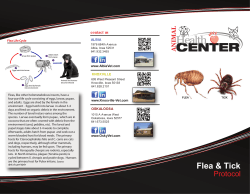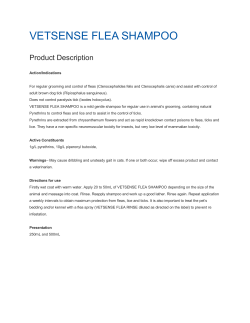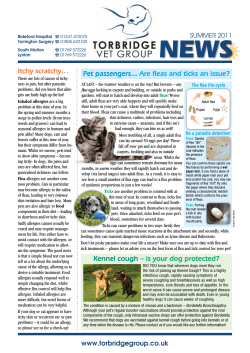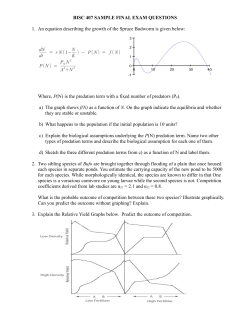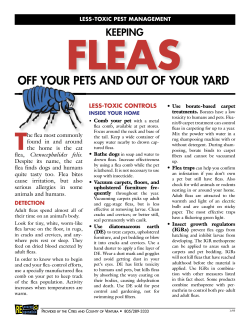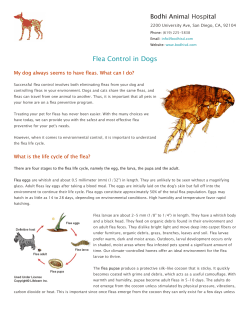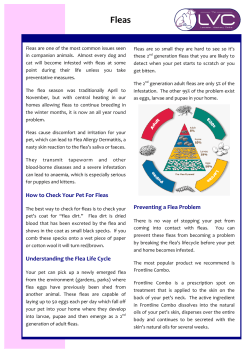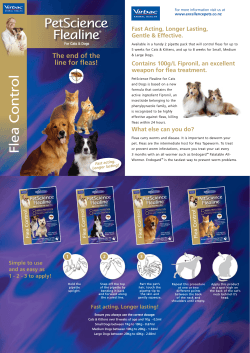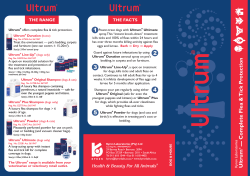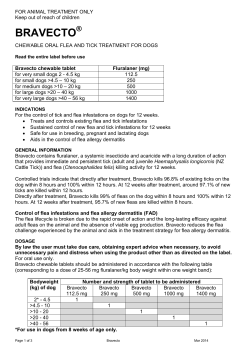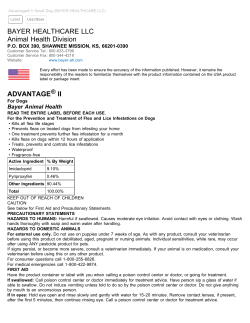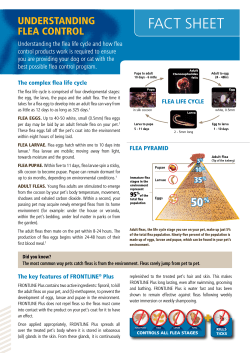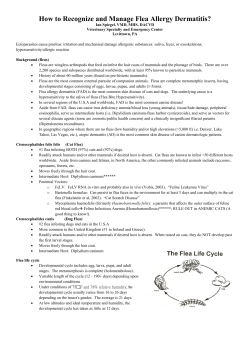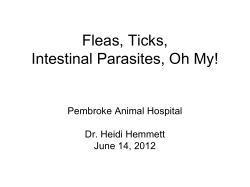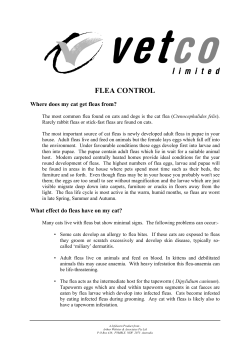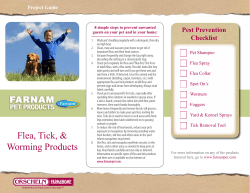
Understanding Fleas and Flea Control
108 Grand Avenue West Des Moines, IA 50265 515-274-3489 Understanding Fleas and Flea Control Flea control can present a challenge – here’s why: Quickly eliminating fleas is impossible because adult fleas produce lots of offspring! The adults you see on your pet are only 5% of the problem; 95% of fleas are eggs, larvae, and pupae which: • Can be found anywhere the pet has been • Are so small that they are difficult to see • Can survive inside the house for over 6 months • Can survive the winter as adults on pets and wildlife • Allow fleas to emerge months after all adult fleas have been killed • Enable flea infestations to thrive in areas as small as a welcome mat in your garage. The Flea Life Cycle: Eggs: Egg production begins 24-48 hours after a flea’s first blood meal. Female fleas lay 40-50 eggs per day in the animal’s coat, with eggs dropping off anywhere the flea-infested host goes. Flea eggs accumulate in areas where pets sleep or rest. Fleas can produce up to 2,000 eggs during their lifetime. After the eggs fall from the animal, they hatch in 1-6 days depending on environmental factors. Larvae: The larval stage lasts 5-11 days, depending on food, temperature and humidity. Larvae are mobile and free-living and feed on organic debris, adult flea feces and other larvae. In the house, larvae are most numerous in areas where the dog or cat spends most of its time. Pupae: The larva transforms into a pupa within a silk cocoon. Cocoons can be found in soil, under vegetation, in carpets, under furniture and on bedding. The cocoons are sticky and debris from the environment usually coat the cocoons. This makes them most resistant to flea treatment products. Pre-emerged adults may remain in the cocoon for up to 30 days when there are no emergence stimuli. Mechanical pressure, carbon dioxide and increased temperatures stimulate emergence; 90-95% of fleas emerge within 21-35 days, with scattered emergence of a few fleas for 60-90 days. Adults: Newly emerged adults are attracted to pets by stimuli such as body temperature, movement, light and carbon dioxide. Once the flea has found its host, it begins to feed almost immediately. People are not usually targeted in lightly infested environments, only if there are too many fleas for the host pets in the household or if pets are removed from the household are when the worst cases of human flea bits occur. Flea Life Cycle Breakdown in an Infested Environment Life Stage Location Adult Fleas – 5% On the pets Pupae – 10% Larvae – 35% Eggs – 50% Duration Adult fleas can live up to 100 days on pets. 1 to 2 weeks, can be delayed up to 6 months. Young adults developing in cocoons that insecticides can’t penetrate. Caterpillar-type young 1 to 2 week life stage. living deep in bedding, cracks or in the carpet. Tiny white eggs that fall off 2 to 6 day life stage. the pet indoors and outdoors Now the Good News: Effective Flea Control is at Hand! Today, products can provide a level of effectiveness and convenience unheard of just a few years ago. However, pet owners should be aware that: • Successful flea control requires CONSTANT and CONTINUOUS treatment • ALL pets need to be treated monthly to prevent infestation and control disease. • The flea control product should be EFFECTIVE, CONVENIENT and SAFE! • Multiple tactics may be necessary, depending upon the level of infestation and your pet’s sensitivity to fleas. • Ask your veterinary staff for products guaranteed to work, over-the-counter flea products can be a waste of money and potentially harmful to your pets! How Flea Control Products Work Adult fleas live on the skin, feeding on the blood of your pets. Fleas are difficult to see. The use of some flea control products like Frontline Plus may make fleas visible because they stimulate the fleas before they die. This means the product is doing its job! Eggs and larvae are killed by an insect growth regulator in the product. Applied topically or to the environment, these products affect the ability of juvenile stages to develop. The larvae stage is unaffected by ANY product, therefore, it is very important to consistently apply flea control products monthly to break the life cycles. Frontline Plus contains both adulticide and insect growth regulators to effectively control the flea life cycle and prevent infestations. Along with a good topical flea product, environmental control can be helpful. Any bedding, rugs, etc. should be washed. Carpets and upholstery can be treated and vacuumed DAILY to remove eggs, larvae and adults; it will also stimulate pre-emerged adults to emerge and speed up the life cycle. As they emerge and find the host pet in the house, they will die shortly after coming in contact with the flea medication on our pet. Steam cleaning your carpets or having them professionally treated is also highly effective in severe infestations. Please talk to your veterinary staff before using any products or with any questions!
© Copyright 2025
